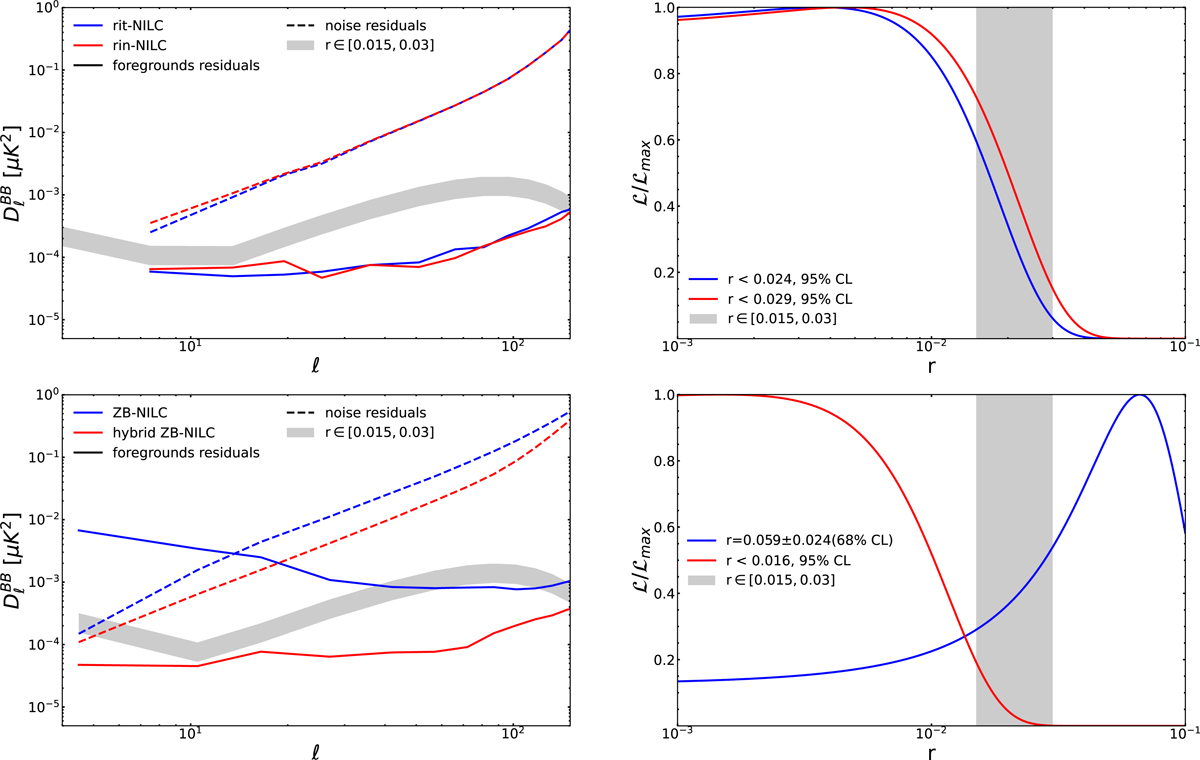Fig. 14.

Download original image
NILC residuals for SWIPE+Planck dataset with the d1s1 Galactic model. On the left: Mean angular power spectra of NILC foregrounds (solid) and noise (dashed) residuals over 200 simulations. On the right: Posterior distributions of an effective tensor-to-scalar ratio fitted to the foregrounds residuals in the case of half de-lensing (AL = 0.5). For the estimation of the posteriors, a binning scheme of Δℓ = 15 has been used to make the angular power spectrum Gaussianly distributed (see Sect. 4.2). On the top: Blue and red lines represent the results when E–B leakage is corrected with, respectively, the iterative and inpainting recycling methods (rit-NILC and rin-NILC). On the bottom: Results when the ZB- (blue) and hybrid ZB-NILC (red) methods are applied. The adopted binning scheme is Δℓ = 6 for 5 ≤ ℓ ≤ 28 and Δℓ = 15 for ℓ ≥ 29 on the top left, while Δℓ = 6 for 2 ≤ ℓ ≤ 19 and Δℓ = 15 for ℓ ≥ 20 on the bottom left. In both cases the chosen binning strategy is just for visualisation purposes. Everywhere the grey region represents the primordial tensor BB angular power spectrum for r ∈ [0.015, 0.03]. The lower bound represents the targeted upper limit at 95% CL by LSPE in case of no detection, the upper one the targeted detection at 99.7% CL. The spectra have been estimated masking the regions most contaminated by foregrounds for a final fsky of 12%.
Current usage metrics show cumulative count of Article Views (full-text article views including HTML views, PDF and ePub downloads, according to the available data) and Abstracts Views on Vision4Press platform.
Data correspond to usage on the plateform after 2015. The current usage metrics is available 48-96 hours after online publication and is updated daily on week days.
Initial download of the metrics may take a while.


